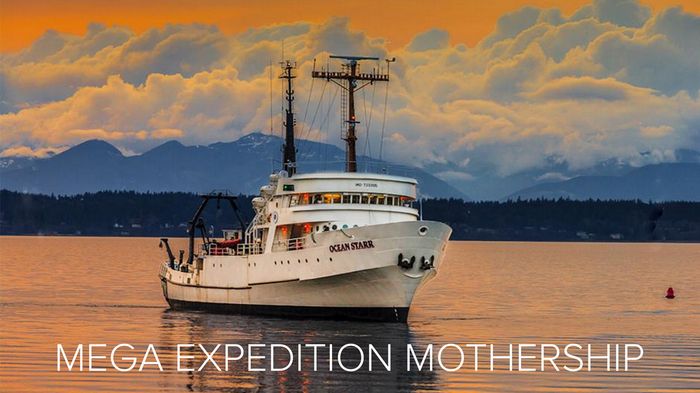
Why the Mega Expedition needs a mothership
Back to updatesWe are happy to announce that marine research vessel “Ocean Starr” will join the Mega Expedition fleet to serve as our mothership.
Formerly owned by NOAA, this vessel will be able to sample both small and large debris by deploying a surface trawl, big nets and a balloon for aerial surveys. The “Ocean Starr” will provide vital information about the size distribution of the plastic that is currently floating in the so-called great Pacific garbage patch.

While the Manta trawl nets will catch small and medium-sized plastics, two big 6 meter wide nets will be able to retrieve genuinely large objects like free-floating particles such as mooring lines, buoys and fishing nets. A large survey balloon will produce video footage of the Pacific, making it possible to map the distribution of these bigger sized pieces. These devices can be deployed all at the same time, thus serving maximum efficiency.
The data collected on the “Ocean Starr”, combined with the six previous vertical distribution expeditions and the spatial distribution data from the Mega Expedition fleet will make it possible to create the most extensive in-depth study of the distribution of ocean plastic ever made.
Measuring 171 feet (52,1 meters) and well equipped with a large laboratory and a large array of scientific instruments she is capable of supporting a maximum of 25 scientists. These characteristics and her excellent ocean-going capabilities make the Ocean Starr the perfect mothership to support the Mega Expedition.
Planned to leave from San Francisco on the 23rd of July, our lead oceanographer will be joined by fifteen researchers. Among the “Ocean Starr” crew will be experienced trawl operators. After spending a month of intersecting the north Pacific, the Ocean Starr is expected to return safely in San Francisco on the 23rd of August.

